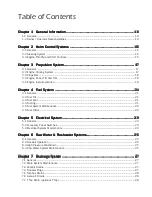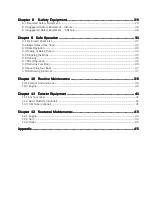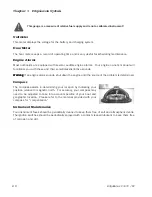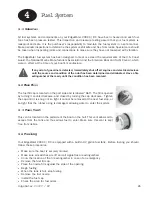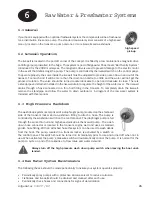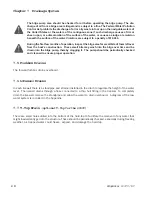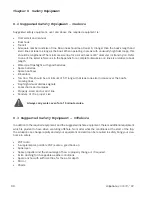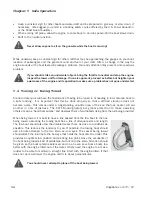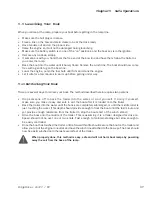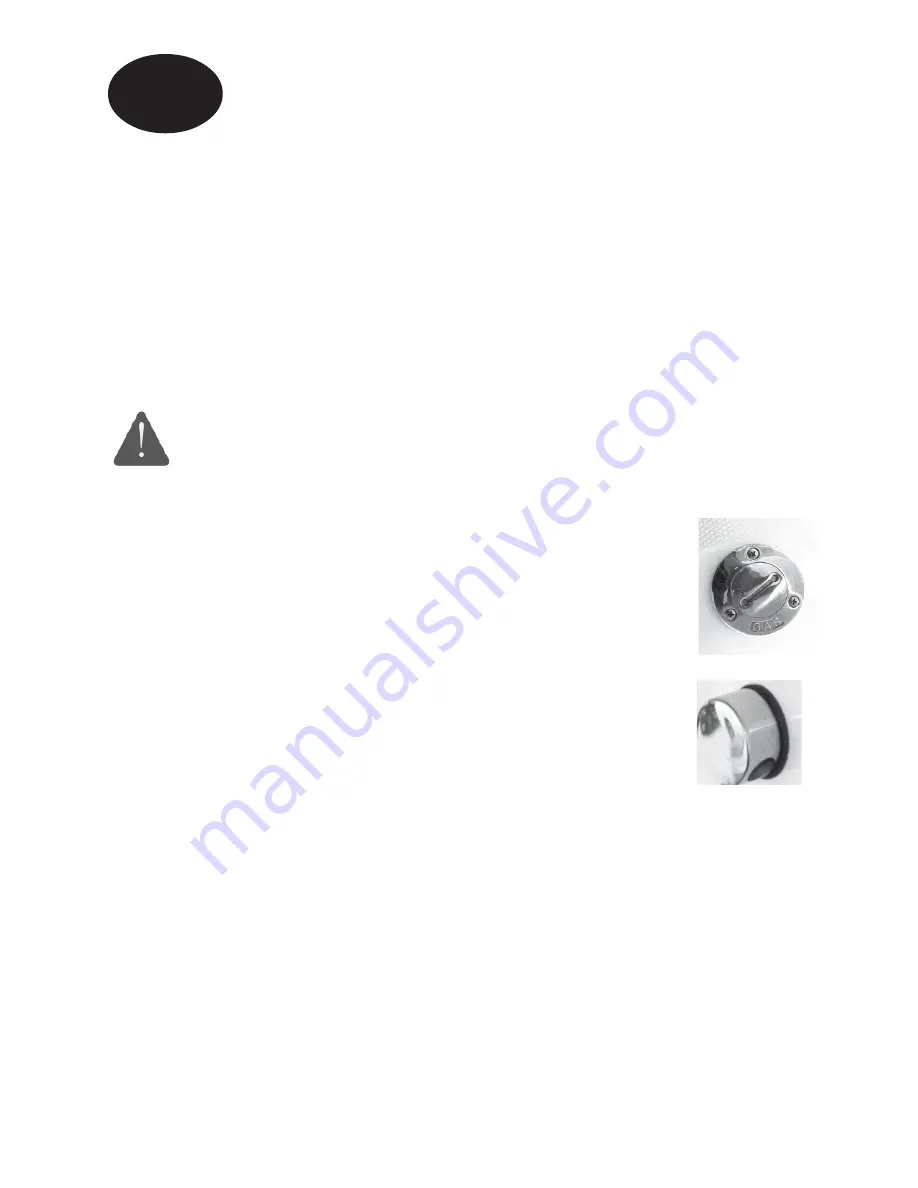
4
Fuel System
EdgeWater 200CC / DC
21
4.1 General
All fuel systems and components on your EdgeWater 200CC / DC have been checked and each fuel
tank has been pressure tested. This inspection and pressure testing assure that your fuel system is
leakproof and safe. It is the purchaser’s responsibility to maintain the fuel system in a safe manner.
Make periodic inspections to determine the system is still safe and free from leaks. Special care should
be taken when inspecting joints and connections to make sure they have not loosened with vibration.
The EdgeWater fuel system has been designed to meet or exceed the requirements of the U.S. Coast
Guard, the National Marine Manufacturers Association, and the American Boat and Yacht Council, which
were in effect at the time of your boat’s manufacture.
If any odor of gasoline is detected, immediately shut off all engines and electrical devices
until the source and condition of the odor has been determined and eliminated. Have a fire
extinguisher at the ready until the condition has been resolved.
4.2 Fuel Fill
The fuel fill cap is located on the port side and is labeled “GAS”. The fill is opened
by turning it counterclockwise, and closed by turning the cap clockwise. Tighten
the cap until it is snug, not so tight it cannot be removed at the next fuel stop, or
so tight that the rubber o-ring is damaged, allowing water to enter the system.
4.3 Fuel Vent
This vent is located on the portside of the boat on the hull. This vent allows air to
escape from the tank and thus allows fuel to enter. Make sure this vent is kept
free from debris.
4.4 Fueling
Your EdgeWater 200CC / DC is equipped with a built-in 92 gallon fuel tank. Before fueling, you should
follow these procedures.
•
Make sure the boat is securely moored.
•
Make sure all switches are off and all cigarettes are extinguished.
•
Know the location of the fire extinguisher in case of an emergency.
•
Remove the fuel fill cap.
•
Place the nozzle firm against the side of the opening.
•
Begin fueling.
•
When the tank is full, stop fueling.
•
Remove the fuel nozzle.
•
Install the fuel cap.
•
Check the area for fuel odors.





